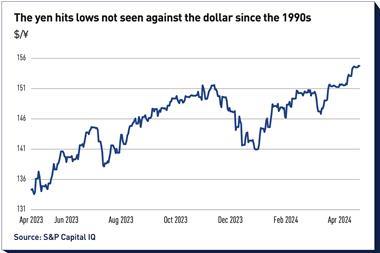Absolute return strategies pursue positive absolute returns rather than endeavoring to outperform some specified benchmark. They are generally considered a subset of the broad-based hedge fund strategies that can provide access to instruments, markets and investment techniques not typically used by traditional stock and bond investments. However, some in the industry also use the term interchangeably with hedge funds, so it is important to define terms during each conversation.
Hedge funds generally combine traditional asset classes like stocks and bonds with non-traditional strategies such as short-selling, arbitrage, and leverage. Depending on the expertise of the managers, they also may include all types of esoteric instruments including but not necessarily limited to: collateralised debt obligations, structured notes, swaps, commodities, currencies, property trusts, and collectibles. Funds of hedge funds take the process one step further by attempting to combine managers of disparate strategies in such a manner to derive maximum return for a given level of risk.
Since hedge funds are available only to qualified investors, managers generally have more freedom to operate in a less regulatory-intensive environment than their traditional counterparts. Hedge funds operate under three mechanisms. First and foremost, short sales involve the sale of borrowed securities considered overvalued with the intent to purchase them later at lower prices to make a profit. Secondly, arbitrage and event-driven strategies attempt to exploit market inefficiencies and temporary price discrepancies. Finally, leverage involves borrowing money to increase the effective size of the portfolio. Leverage serves as a catalyst to increases risk and return potential.
Being the hedge fund industry’s closest equivalent to a mutual fund, a hedge fund of funds invests in multiple hedge funds, generally between five and 100, with different investment styles. The objective is to smooth out the potential inconsistency of the returns from having all of the assets invested in a single hedge fund ie, to put all eggs in one basket. Funds of funds can offer an effective way for an investor to gain exposure to a range of strategies without having to commit substantial assets or resources a specific asset class, strategy, or philosophy. Additionally, a growing number of style or category-specific funds of funds, with a somewhat narrower focus, have been launched during the past few years. Examples of these might be one that invests only in event-driven managers or another that invests only in market-neutral equity managers. Funds of funds represent 14.1% of alternative funds.
Hedge funds of funds endeavor to provide significant diversification by carefully blending strategies varying across the spectrum of potential volatilities. Toward this end, due diligence research efforts are critical in order to provide robust products. Frequently, teams of specialists will research and select hedge funds with disparate strategies. Next, the selected strategies are combined in order to attempt to produce a favourable return-per-unit-risk ratio. Frequently, optimisers, such as BARRA, APT, and New Frontier, are utilised for these purposes. However, since histories are characteristically short and processes are opaque, the specialists must monitor the selected funds consistently.
According to Goldman Sachs Prime Brokerage, hedge fund industry assets are expected to reach $760bn (E752bn) in 2002 and funds of funds should increase to $204bn from $144bn, an increase of 14%. A study of the population of fund of funds as of May, 2002 revealed that of the approximately 450 funds tracked by hedgefund.net approximately 47% have track records of 36 months or less. These firms have experienced significant assets growth. Hedge funds of funds do have a slight advantage over hedge funds. Hedge fund investment methods are complicated given a huge number on offer. A fund of funds can also provide access to hedge funds that are otherwise not accessible, as they either require an extremely high ‘minimum’ investment or are not open to new investors.
Table A shows the performance of a typical pension fund index compared with the same index that includes hedge funds added at different levels from 5 to 20%. As hedge funds are added, the index return increases and the volatility is lowered.
Table B indicates net performance in all negative months of the S&P 500 return index between January 1990 and March 1999 and the corresponding performance of the US Pension Fund Index and the performance of the US Pension Fund Index with hedge fund inclusion carrying from 5% to 20% combined. The negative return is much improved with a higher % hedge fund added.
With somewhat less formal board guidelines and general mandates to maximise of available funds, endowments and foundations have been participating in absolute return strategies, in size, for about five years. In particular, the Common Fund, based in Wilton CT, has been refining its policies for investment in these vehicles since 1999. In contrast, until the beginning of this year, the US pension community has exhibited significantly more trepidation toward accepting hedge funds as an asset class. These barriers seemed to be lifting when California Public Employees’ Retirement System (CalPERS) and the New York State Teachers’ Retirement System (NYSTRS) announced early last spring that they planned to invest in hedge funds. However, such progress has not moved rapidly. CalPERS originally said it would invest $14bn in the asset class, but then retracted the magnitude of the commitment when it realised that the industry was not yet sufficiently mature to absorb that huge a flow. Meanwhile, NYSTRS continues to explore the asset class, but has not yet made a definite commitment. More recently, The Pennsylvania State Employee Retirement system announced a $1.8bn mandate.
Jim McKee, vice president of Capital Markets Research for San Francisco-based Callan Associates, a major US pension consultancy, expressed somewhat countervailing sentiments. On the one hand, absolute return strategies clearly have potential to improve overall risk-return ratios by adding positive returns from uncorrelated sources. However, due to the legal demands of ERISA and the necessity of meeting obligations on schedule, pension managers tend to be extremely conservative and thus, skeptical of new approaches. In specific cases, McKee muses, the skepticism may be well-placed. He has an acronym for hedge fund investing risks dubbed ‘FOILED’. It breaks down to:
f = fraud risk (since holdings are not kept with institutional custodian);
o = opaqueness (holdings not shown to investors);
i = illiquidity;
l = leverage risk;
e = evaluation risk (from the difficulty in choosing a suitable benchmark); and
d = diminishing return risk (the propensity of an anomaly to disappear as more dollars chase it).
For most pension managers, it all adds up to substantial career risk. That said, with the recent advent of new benchmarks, such as the one recently introduced by Standard & Poor’s, and the increasing need for alternate sources of return, the trend toward eventual adoption of this class continues to strengthen.
Mark Rosenberg, is CEO and chief investment officer of State Street Absolute Return Investment Strategies (SSARIS) Advisors. He is very optimistic about the potential for the strategies to attract more institutional assets in the future. He says, “Hedge funds have fulfilled what modern portfolio theory suggests. They are ideal asset types to add to institutional investment portfolios due to the low correlation with traditional stocks and bonds added to the opportunity to make money in any economic environment.” Hedge funds dramatically improve the efficient frontier of the traditional portfolio. Rosenberg adds, “In contrast, other alternative investment asset classes, such as real estate and venture capital, seldom do well in economic downturns.”
Amidst increasing worry by pension fund managers about equity returns, the asset class is gaining momentum according to Robert Shulman, co-chief executive officer and president, Tremont Advisors, New York, a leading hedge fund advisory firm. Shulman estimates that $2bn to $3bn in new institutional money has flown into hedge funds of funds this year, so far, from medium to larger sized pension funds. Ray Nolte, managing director launched the first hedge fund of funds for Deutsche Asset Management in 1997. Now, his group manages more than $3bn. He says: “We have been seeing an increase in interest from institutional investors. They are starting to recognise some of these absolute return strategies as a new asset class.” John Ford, a spokesman for Blackstone Alternative Asset Management, New York managed $1.6bn in hedge funds of funds says, “Endowment monies continue to dominate our client base, but much of the money we are seeing this year is coming from Fortune 50 and Fortune 100 corporate pension plans funding their allocations by cutting back slightly on both equities and fixed income.
One manager willing to provide full transparency is Pasadena (CA)-based First Quadrant, the pioneers of the ‘portable alpha’ concept. The portable alpha results from overlaying another portfolio with a perfectly market-neutral portfolio providing added returns only from the differential in returns between its long holdings and its short positions. From this concept, they offer a large array of absolute return strategies including US market neutral equity, Pan European market neutral equity, managed futures, managed currency, volatility arbitrage, and layered alpha strategies.
The importance of educational efforts from non-traditional pension consultants should not be overlooked. Investorforce is a web-based consulting firm in the US, providing qualitative database services related to hedge funds. Chairman Frank Minard says, “The firm exists to promote transparency and to assist institutional investors through the educational process of learning about hedge funds.” He adds, “The inclusion of hedge funds into the pension plan asset allocation model is considered a new concept, possibly started in the last two to three years. The incorporation of this investment vehicle is in the vicinity of 5%, but that will grow as transparency improves. The challenge for each institution is to determine how these strategies can best be combined with its total portfolio.”
For the providers of absolute return strategies, there is an even trickier combination to consider. They will probably need to become more transparent and cede some autonomy in order to attract significant investments from major institutions. Their long-term success may depend on how well they can meet the challenge of simultaneously complying with these requests and accepting significant inflows while still producing superior and uncorrelated rates of return.
Herbert Blank and Pauline Lam are with advisory firm QED International in New York












No comments yet